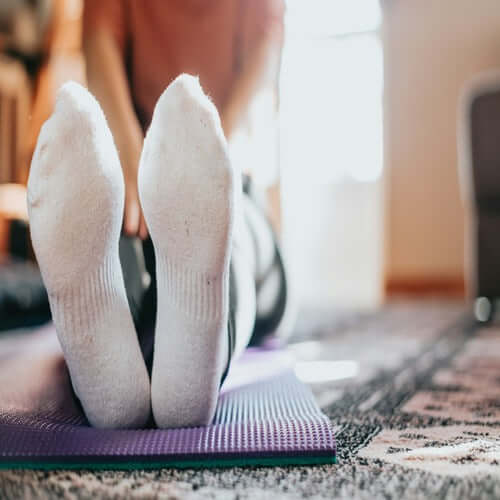The barefoot shoe trend is growing in popularity. These shoes are designed to mimic the feeling of walking or running without shoes, providing a more natural experience. One common question people ask is whether to wear socks with barefoot shoes.
Barefoot shoes are different from regular shoes. They have a thin sole and are meant to give you the sensation of being barefoot while offering some protection. Wearing socks with these shoes can be a personal preference. It depends on what makes you comfortable and the specific activity you're engaging in.
This article will help you understand the advantages of each and provide tips on choosing the right socks for your needs. We will also offer some advice on transitioning to barefoot shoes smoothly. Whether new to barefoot shoes or an experienced user, you'll find helpful information to make the best foot choice.
Benefits of Wearing Socks with Barefoot Shoes
Wearing socks with barefoot shoes can offer several advantages. One of the main benefits is protection from blisters. Socks reduce friction between your foot and the shoe, which helps prevent painful blisters, especially during long walks or runs. This added layer of cushioning can greatly improve your comfort.
Another benefit is hygiene. Socks absorb sweat, keeping feet dry and reducing the growth of bacteria. This is particularly useful for those who sweat more or plan to wear barefoot shoes for extended periods. Clean feet also mean less odour, making shoes stay fresher for longer.
Warmth is also a significant factor. In colder weather, socks provide an extra layer of insulation. This helps keep your feet warm while allowing you to enjoy the benefits of barefoot shoes. You can adapt your sock choice to the weather and activity, from thick, woollen socks to thin, moisture-wicking ones.
Benefits of Going Sockless with Barefoot Shoes
Choosing to go sockless with barefoot shoes has its own set of benefits. The most obvious is a more natural feeling. Without socks, you get a closer connection to the ground, which is one of the key features of barefoot shoes. This helps improve your balance and gives a more authentic barefoot experience.
Another advantage is increased breathability. Going sockless allows more air to circulate around your feet, keeping them cooler and reducing sweat build-up. This can make a big difference in hot weather or during intense physical activities, making your feet feel more comfortable and free.
Less bulk is also a plus. Without socks, your shoes fit more snugly, providing a better grip and feel. This can enhance performance in activities like running or hiking, where footwork and precision are crucial. Minimalists who aim to reduce extra weight and layers will particularly enjoy this benefit.
How to Choose the Right Socks for Barefoot Shoes
Choosing the right socks for barefoot shoes is crucial to maximise comfort and performance. One of the main considerations is material. Opt for moisture-wicking materials like merino wool or synthetic fibres. These materials help dry your feet by drawing sweat away from the skin.
Thickness is another important factor. Thin socks provide a closer feel to the barefoot experience, while thicker socks can offer more cushioning and warmth. Depending on the activity and weather, you might want different thicknesses on hand.
Fit matters, too. Look for socks designed to fit snugly without bunching up. Seamless designs can also help reduce areas that might cause blisters. Injinji toe socks are popular because they prevent toe rubbing and promote natural foot movement.
Tips for Transitioning to Barefoot Shoes
Transitioning to barefoot shoes requires a careful approach to avoid injury. Start by gradually increasing your wear time. Begin with short periods, around 20–30 minutes, and slowly build up. This allows your feet and muscles to adapt to the new experience.
Incorporate foot-strengthening exercises into your routine. Practice exercises like toe curls and calf raises to build up the muscles in your feet and lower legs. This helps in preventing strain and boosts your foot health.
Pay attention to the terrain. Initially, stick to softer surfaces like grass or dirt trails. Hard surfaces might be too challenging for beginners. As your feet get stronger, you can start experimenting with different terrains.
Listen to your body. If you experience discomfort or pain, give your feet some rest. Overdoing it can lead to injuries such as plantar fasciitis. Taking it slow ensures a smoother transition to barefoot shoes.
Conclusion
Deciding whether to wear socks with barefoot shoes comes down to personal preference and specific needs. Both options offer distinct benefits. Socks can provide extra comfort, hygiene, and warmth, while going sockless offers a more natural and breathable experience. The right decision depends on the activity, weather, and your comfort.
Choosing the right socks for barefoot shoes can enhance your experience by providing the perfect balance of cushion, fit, and moisture management. Gradually transitioning to barefoot shoes is crucial in avoiding injuries and ensuring a positive experience.
Whether you wear socks or go sockless, having the right gear makes all the difference. At Adventureco, we offer a wide range of Vivobarefoot shoes and accessories. Explore our collection to find the perfect match for your adventure needs, and enjoy the benefits of barefoot shoes to the fullest!

